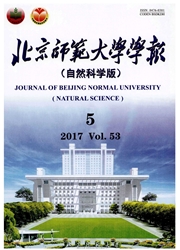

 中文摘要:
中文摘要:
生物信号的非平稳特性使得经典的时域分析方法和频域分析方法不能更好地描述信号的局部特征,而联合时频表示可以有效地反映信号的瞬时频率特性.事件相关电位(ERP)是指在特定认知任务下获取的脑电信号,它与刺激所引起的皮层电位直接相关,ERP信号的时频分析将有助于从更深层次上解读其中蕴涵的丰富信息.本文在对几种典型时频表示方法的比较基础上,提出了一种基于滤波器组-Hilbert变换的信号时频表示方法,将这几种方法应用到模拟信号的结果表明,该方法可以更好地保留信号时频特征的细节.因此通过将滤波器组-Hilbert变换方法应用到心理学经典Stroop任务的ERP信号分析中,除了可以得到与心理学传统ERP分析一致的结果外,还可以获取比之更为丰富的信息.
 英文摘要:
英文摘要:
Other than the traditional analysis methods merely on time domain or frequency domain which are unable to describe the local characteristics of the biological signals properly due to their nonstationarity, the joint time-frequency representation can illuminate the transient frequency characteristics os signal effectively. Event related potentials are a kind of electroencephalography recorded in the specific cognitive task, which are directly related with scalp potential caused by stimulus. By the time-frequency method more abundant information can be mined from ERP data. Based on the comparison of several classic time-frequency representations, a time-frequency representation using filter bank and Hilbert transform is introduced. The results on simulated data indicate that the method could preserve the time-frequency details better. Therefore, by applying the method to the ERP data from the classical psychological Stroop task, the information more abundant is presented besides the consistent results with the known.
 同期刊论文项目
同期刊论文项目
 同项目期刊论文
同项目期刊论文
 期刊信息
期刊信息
